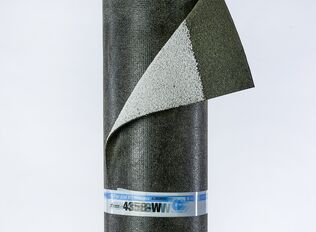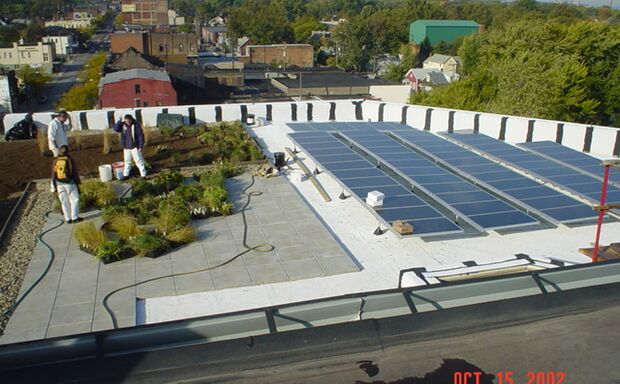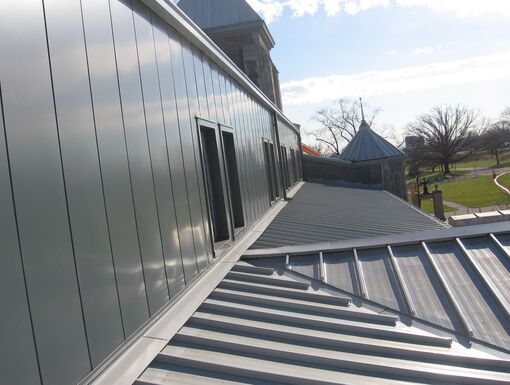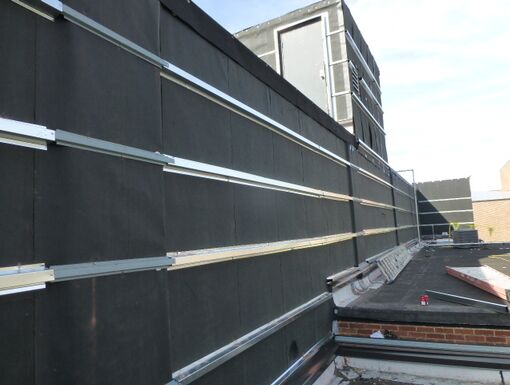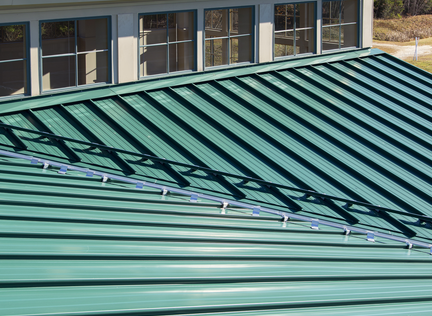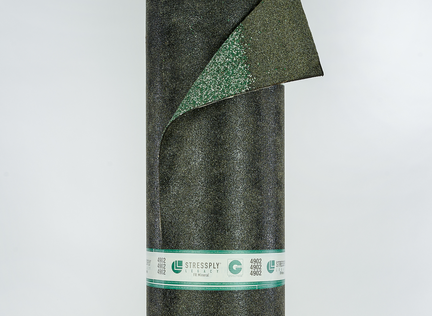Reflective Roof Coatings
The use of reflective coatings on roofs to reduce the energy required to keep building interiors cool has become an increasingly controversial topic in recent years. Many building owners, particularly in the public sector, have become wary of the one-regulation-fits-all approach being taken by some states and municipalities. The building industry, from architects and designers to manufacturers and consultants, have also expressed concerns that reflective coatings, when used in northern regions of the country, may inflate construction costs with no appreciable effect on energy cost reduction.
Nevertheless, when appropriately specified, reflective roof coatings provide the quickest return on your sustainability investment by realizing energy savings worth as much as twenty cents per square foot for commercial buildings6. This benefit is particularly apparent for buildings that draw rooftop air into their HVAC units, since it takes far more energy to reduce hot 185°F (85°C) air down to a comfortable 70°F (21.1°C), than it does to cool air that enters the HVAC at a cooler 110°F (43.3°C) temperature. Since the reducing the use of fossil fuels is a primary driver behind LEED certification, reflective roofing typically rates high for LEED point contribution as well.
Reflective coatings offer the additional benefit of extending a roof’s service life by increasing UV resistance and reducing the thermal shock associated with extreme fluctuations in rooftop temperatures.
The final area in which reflective coatings are currently providing a real competitive advantage is in eco-related governmental approvals, tax credits, etc. Since the reduction of fossil fuels remains a primary governmental concern and reflectivity is the exterior design solution most frequently associated with energy savings, there may be powerful local incentives for choosing this sustainable design option.
Your roofing material manufacturer or design professional can help you determine the probable financial impact of a cool reflective coating, based on your regional climate and other factors such as shade-creating surroundings.
From an aesthetic perspective, white reflective coatings remain popular with the design community. Where aesthetics are not a driving concern, aluminized reflective coatings may provide a cost-effective sustainable alternative; there is also evidence that aluminized coatings offer better energy savings than white coatings when used in northern climates.
Some reflective coatings incorporate biobased and/or recycled content, for example, soy oils. Always check with your roofing manufacturer to determine whether such options are available. From a service life perspective, reflective coatings offer the advantage of extending the time between cradle and grave.

